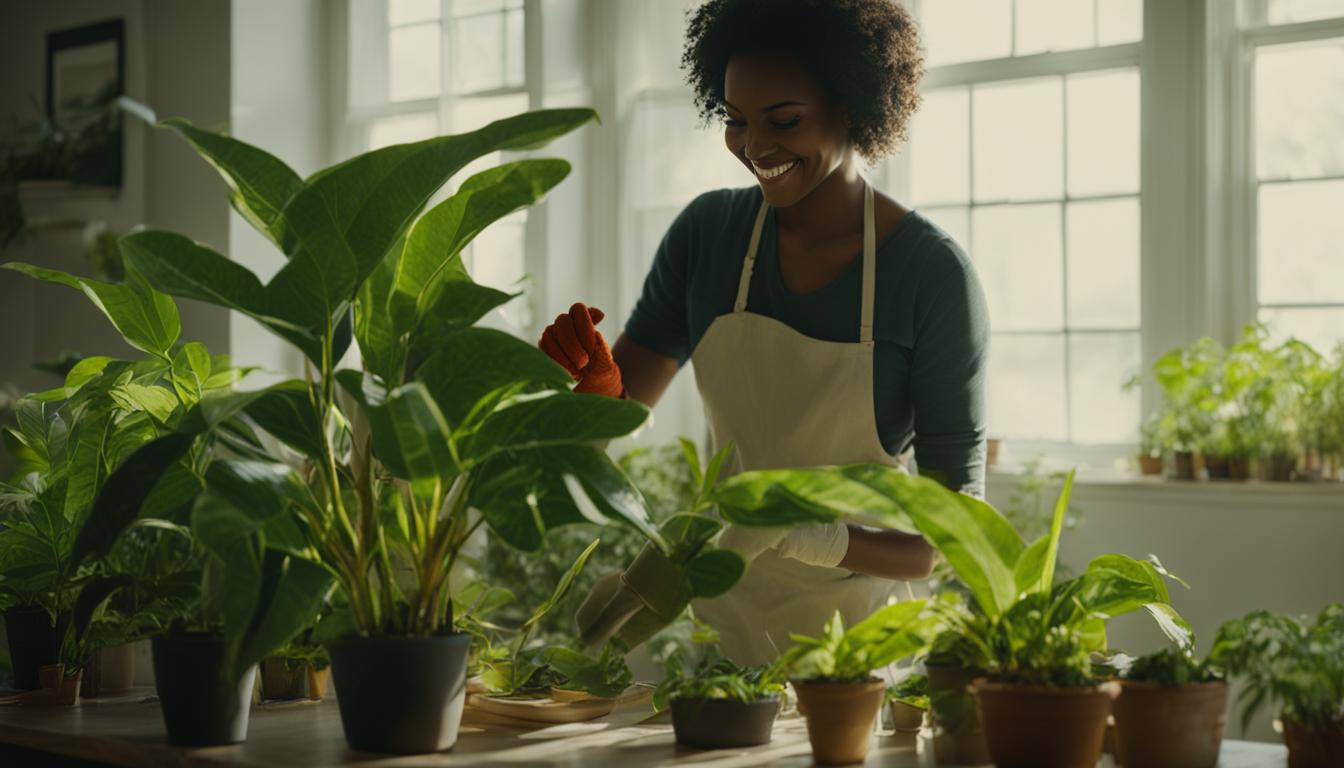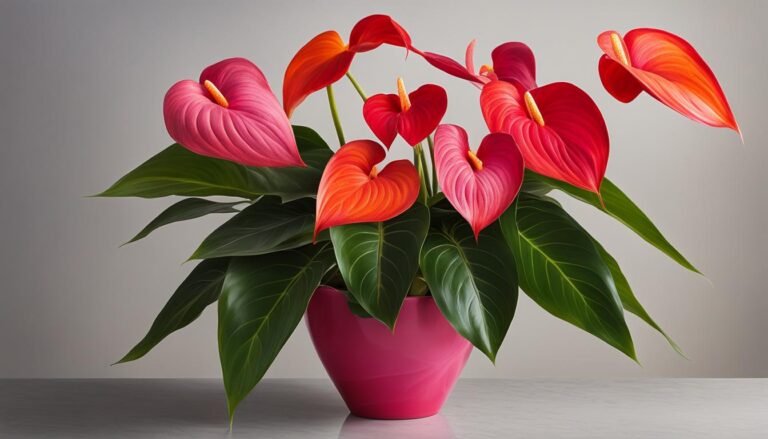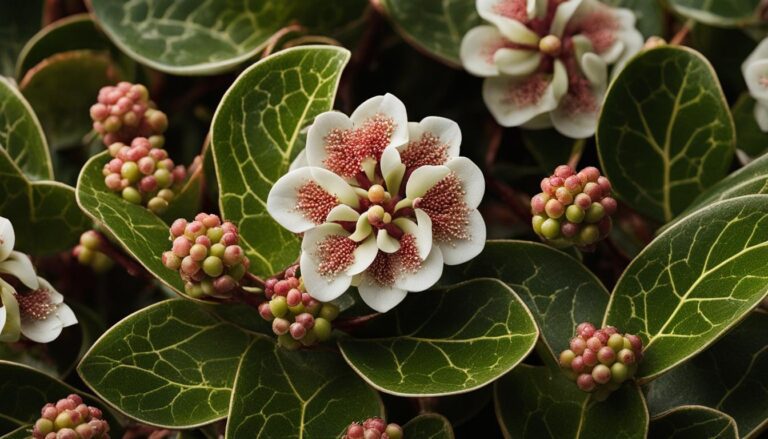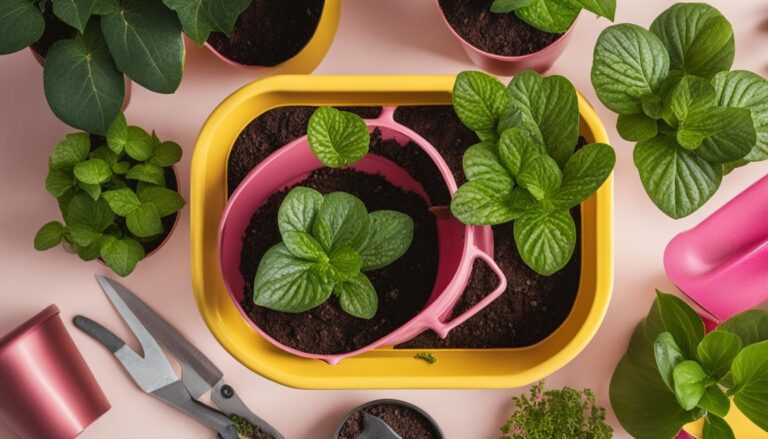
Welcome to my guide on mastering Croton (Codiaeum variegatum) – the vibrant and eye-catching plant that will bring life and beauty to your indoor or outdoor garden. If you’re looking for a plant with colorful and variegated leaves, the Croton plant is the perfect choice.
With numerous varieties available, such as Mammy Croton, Petra Croton, and Gold Dust Croton, each with its own unique colors and patterns, you’ll have endless options to create a visually stunning garden.
To ensure your Croton (Codiaeum variegatum) thrives, it’s important to understand the proper care techniques. From temperature and light requirements to watering and fertilization, I’ll guide you through every step to ensure your Croton plant flourishes.
So, whether you’re a seasoned gardener or just starting your green thumb journey, join me as we delve into the world of Croton plants and discover the secrets to growing and caring for this remarkable plant.
Croton Care Tips
The Croton plant, scientifically known as Codiaeum variegatum, is a vibrant tropical plant that can bring a burst of color and energy to any indoor space.
Known for its leathery leaves that come in a variety of shapes and a spectrum of colors, from deep greens and yellows to striking reds and oranges, the Croton plant is a popular choice for indoor gardeners looking to add a touch of the tropics to their decor. To maintain its dazzling display, the Croton requires a bit of specialized care to thrive indoors.
To begin with, Crotons are warmth-loving plants and prefer a consistent temperature range between 60-85°F (16-29°C). They thrive in high humidity and require plenty of bright, indirect sunlight to keep their colors vibrant.
When watering, it’s crucial to allow the top inch of soil to dry out between waterings to prevent root rot, but never let the soil become completely dry. Crotons can be sensitive to fluoride and chlorine commonly found in tap water, so using filtered or distilled water can prevent leaf spotting.
Fertilizing should be done during the growing season with a balanced, water-soluble fertilizer to support their robust growth. Lastly, regular pruning not only helps to maintain their shape but also encourages fuller growth and can be used to propagate new plants.
Crotons are known to have air-purifying qualities, filtering out certain toxins and providing cleaner air in your home. It’s important to note that they are toxic when ingested.
The sap can cause skin irritation in some individuals, and the leaves, if ingested by pets or humans, can lead to stomach upset, so it’s best to keep them out of reach of children and animals.
| Care Aspect | Details |
|---|---|
| Light | Bright, indirect sunlight. Direct sun can scorch the leaves. |
| Temperature | Prefers 60-85°F (16-29°C). Avoid drafts and sudden temperature changes. |
| Humidity | High humidity is ideal. Consider a humidifier or a pebble tray with water. |
| Watering | Allow the top inch of soil to dry out between waterings. Use filtered water if possible. |
| Soil | Well-draining potting mix. |
| Fertilization | Balanced, water-soluble fertilizer every 4-6 weeks during the growing season. |
| Pruning | Regularly to maintain shape and encourage fuller growth. |
| Toxicity | Toxic if ingested; sap can cause skin irritation. |
| Air Purification | Known to filter out certain air toxins. |
Incorporating these care tips into your routine will help ensure that your Croton plant remains a stunning and healthy addition to your indoor garden. Remember to handle with care, especially when pruning or repotting, to avoid the sap which can be an irritant. With the right conditions and a little attention, your Croton will be a long-lasting, eye-catching feature in your home.
Popular Varieties of Croton Plants
The world of Croton plants is filled with a diverse array of stunning varieties, each boasting its own unique colors, patterns, and leaf shapes.
Whether you’re an avid plant collector or a beginner looking to add a touch of vibrancy to your space, there is a Croton variety to suit every taste. Let’s explore some of the most popular and visually captivating Croton plants available:
Mammy Croton
The Mammy Croton is a showstopper with its large, glossy leaves that showcase a striking mix of red, orange, and yellow hues. This variety adds a burst of warm colors to any room or garden and is sure to be a focal point of attention.
Petra Croton
The Petra Croton is known for its breathtaking foliage featuring a combination of deep green, vibrant red, and golden hues. The leaves have a leathery texture and are beautifully variegated, making this variety a true standout among other plants.
Gold Dust Croton
The Gold Dust Croton lives up to its name with its speckled leaves that are splashed with golden yellow and green colors. This variety adds a touch of brightness and elegance to any setting, making it a popular choice among plant enthusiasts.
These are just a few examples of the many stunning Croton varieties available. Whether you prefer bold and dramatic colors or subtle and intricate patterns, there is a Croton plant that will capture your heart and elevate the aesthetic of your indoor or outdoor space.
| Popular Croton Varieties | Leaf Colors | Leaf Patterns |
|---|---|---|
| Mammy Croton | Red, orange, yellow | Solid, variegated |
| Petra Croton | Green, red, golden | Solid, variegated |
| Gold Dust Croton | Golden yellow, green | Speckled |
Tips for Propagating and Growing Croton Plants
If you’re looking to expand your collection of vibrant and eye-catching Croton plants, propagating them through stem cuttings is a great way to do it. Here are some tips for successfully propagating and growing Croton plants:
1. Choose a healthy cutting: Select a 4-6 inch stem cutting from a mature and healthy Croton plant. Make sure the plant is disease-free and free from any signs of pests.
2. Prepare the cutting: Remove the lower leaves from the cutting, leaving only a few leaves at the top. This will help the cutting focus its energy on developing roots.
3. Promote root development: Dip the cut end of the stem in rooting hormone, which will encourage the growth of new roots. This step is crucial for successful propagation.
4. Plant the cutting: Plant the cutting in a well-draining potting mix, ensuring that the soil is moist but not waterlogged. Place the pot in a warm and humid environment, such as a greenhouse or a propagator, to create the ideal conditions for root development.
5. Care for the cutting: Keep the soil consistently moist but avoid overwatering. Provide the cutting with bright, indirect light to promote growth. Avoid placing it in direct sunlight, as it may scorch the leaves. Once the roots have developed, you can gradually acclimate the young plant to its desired indoor or outdoor location.
By following these tips, you can successfully propagate and grow your own Croton plants, whether you prefer to keep them indoors or showcase them in your outdoor garden. Enjoy the process of watching your new plants thrive and add a burst of color to your green space!
FAQ
How do I propagate a Croton plant?
To propagate a Croton plant, take a 4-6 inch stem cutting from a mature and healthy plant. Remove the lower leaves from the cutting and dip the cut end in rooting hormone to promote root development. Plant the cutting in a well-draining potting mix and keep it in a warm and humid environment until roots develop.
What are some popular varieties of Croton plants?
Some popular varieties of Croton plants include the Mammy Croton, Petra Croton, and the Gold Dust Croton. These varieties have unique colors, patterns, and leaf shapes that add vibrancy to any garden.
Can I grow Croton plants indoors?
Yes, Croton plants can be grown indoors. They thrive in bright and indirect light conditions. Ensure that the indoor environment is warm and humid, and provide regular watering and well-draining soil to keep the plant healthy.
Can I grow Croton plants outdoors?
Absolutely! Croton plants can be grown outdoors in areas with a tropical or subtropical climate. They prefer full sun or partial shade and well-draining soil. Ensure that the outdoor space is protected from strong winds and cold temperatures.
How often should I water my Croton plant?
Croton plants prefer to be kept evenly moist. Water the plant when the top inch of soil feels dry, and avoid overwatering to prevent root rot. In general, watering once a week should be sufficient, but adjust the frequency based on the specific needs of your plant and the environmental conditions.
Are Croton plants toxic to pets?
Yes, Croton plants are toxic to both cats and dogs. Keep them out of reach of pets or consider choosing pet-friendly plants if you have animals in your home.






